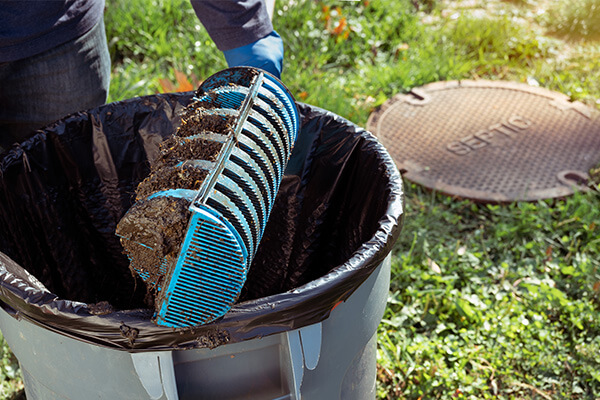
Image Credit: Puget Sound Septic
If your home isn’t connected to a city sewer system, your septic system handles all your wastewater—from toilets and sinks to laundry and showers. And if your septic tank was installed in the last few decades, it likely includes a septic tank filter (also called an effluent filter), which plays a vital role in keeping solids from reaching and clogging your drain field.
This small, often-overlooked component helps your entire system run more smoothly—and when it’s neglected, problems can pile up quickly. Here’s how to stay ahead with simple, practical filter maintenance tips.
Do’s And Don’ts for Septic Tank Filter Maintenance
The Do’s:
1. Clean the Filter Regularly
Effluent filters need to be cleaned once a year, or more often if your household uses a lot of water. Most homeowners have this done during regular septic pumping. A clogged filter can cause slow drainage, backups, and tank overflows—so keeping it clean is key.
2. Include It in Routine Inspections
Whether you’re scheduling a tank inspection or a pump-out, make sure the technician checks and cleans the filter too. Professionals will remove it, hose it off, and check for cracks or damage that might call for replacement.
3. Know Where It’s Located
Filters are typically installed inside the tank at the outlet tee. If you’re not sure whether your system has one—or how to access it—ask your septic provider. Knowing where your filter is can save time and money during service calls.
4. Track Your Maintenance
Keep a simple record of filter cleanings and tank pump-outs. This log will help prevent missed cleanings and give future owners or service providers a clear picture of your system’s health.
The Don’ts:
1. Don’t Skip Filter Cleaning
If your tank has a filter, it must be maintained. Skipping filter maintenance can lead to tank overflows, clogged effluent lines, or even drain field damage—resulting in expensive repairs that could have been avoided.
2. Don’t Assume All Septic Tanks Have Filters
Older systems may not include one. If your system was built before the 1990s, you may not have a filter at all. If that’s the case, your technician may recommend retrofitting one for added protection.
3. Don’t Remove the Filter Permanently
Some homeowners are tempted to remove a filter after a clog or backup. But doing so eliminates one of the best defenses your system has. If your filter keeps clogging, it’s a sign your tank needs to be pumped or your usage habits may need adjusting—not that the filter should be discarded.
4. Don’t Try to Clean It Without the Right Gear
Cleaning a septic filter involves removing a lid, handling wastewater, and properly reinstalling the filter—often in a confined space. If you’re not comfortable doing this safely (or at all), leave it to the pros.
Protect Your Drain Field by Caring for Your Filter
Your effluent filter is designed to catch solids and debris that could otherwise clog your drain field—the most expensive part of your septic system. Keeping it clean is one of the simplest and most cost-effective ways to ensure your system stays functional for years to come.
If you’ve just moved into a home with a septic system, now is the time to find out:
- Does your tank have a filter?
- When was it last cleaned?
- When is the next cleaning due?
If your septic tank has a filter, it’s there to protect your system. Routine maintenance—especially regular cleaning—is a small effort that prevents major headaches. Don’t ignore it. Instead, make effluent filter care part of your regular septic maintenance plan.